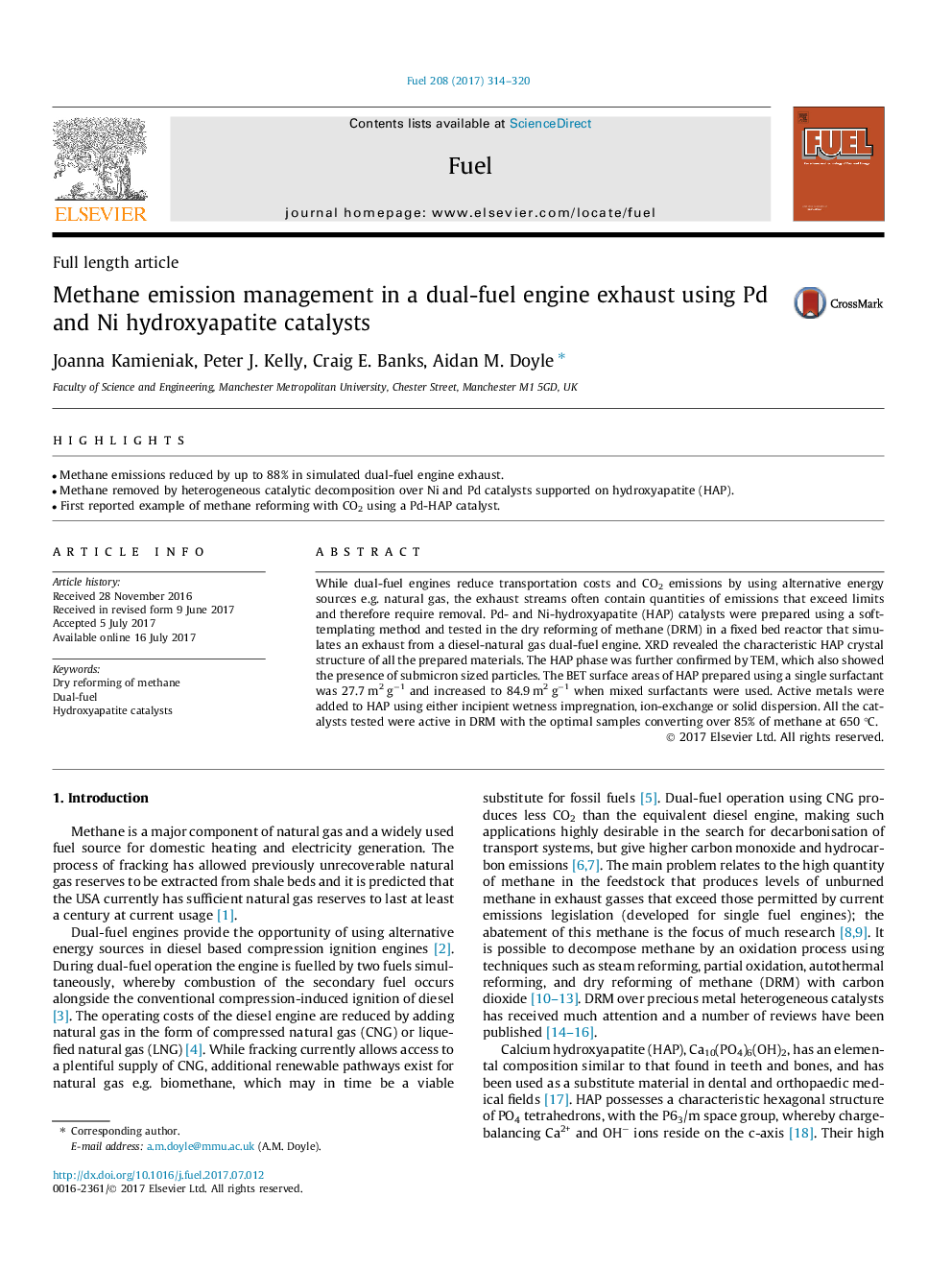| Article ID | Journal | Published Year | Pages | File Type |
|---|---|---|---|---|
| 6474104 | Fuel | 2017 | 7 Pages |
â¢Methane emissions reduced by up to 88% in simulated dual-fuel engine exhaust.â¢Methane removed by heterogeneous catalytic decomposition over Ni and Pd catalysts supported on hydroxyapatite (HAP).â¢First reported example of methane reforming with CO2 using a Pd-HAP catalyst.
While dual-fuel engines reduce transportation costs and CO2 emissions by using alternative energy sources e.g. natural gas, the exhaust streams often contain quantities of emissions that exceed limits and therefore require removal. Pd- and Ni-hydroxyapatite (HAP) catalysts were prepared using a soft-templating method and tested in the dry reforming of methane (DRM) in a fixed bed reactor that simulates an exhaust from a diesel-natural gas dual-fuel engine. XRD revealed the characteristic HAP crystal structure of all the prepared materials. The HAP phase was further confirmed by TEM, which also showed the presence of submicron sized particles. The BET surface areas of HAP prepared using a single surfactant was 27.7 m2 gâ1 and increased to 84.9 m2 gâ1 when mixed surfactants were used. Active metals were added to HAP using either incipient wetness impregnation, ion-exchange or solid dispersion. All the catalysts tested were active in DRM with the optimal samples converting over 85% of methane at 650 °C.
